What is CRM Audit & How to Use it for Improving Workflows

Is CRM integration enough? Doesn’t it need a thorough check-up after a successful integration?
C’mon! Your answer should be yes of course!
You can’t overlook its good health to leverage the benefits of successful CRM implementation that is supported by factual data, which says a CRM can drive growth of 87% in sales, 74% in customer satisfaction, and overall 73% enhancement in business efficiency.
Well, still if you’re having a deep down thought on how exactly a CRM audit enables you to count on the benefits of CRM integration, let me make this easy for you to understand with an example.
In the banking sector, after each financial year ending an audit is conducted as a form of investigation. The auditors sharply examine a wider spectrum including financial statements, accounting records, administrative and operational reports, expense and revenue reports, and so on. And finally, they came up with a comprehensive conclusion to submit a final report for improvisation
Sounds relatable? The same goes for your CRM audit as well. Now let’s dive into all your queries that you may have and satiate your thirst.
What is a CRM audit?
The CRM audit is simply done to hit an extra caution that you never leave room for internal technology intricacies, marketing, and sales performance inefficiencies, or false data analytics.
Moreover, this audit helps you to find gaps between the usage of CRM and the application of your sales intelligence to boost sales engagement, its long-term impact on your business, and the way out for improvements.
But wait! Don’t forget to choose the right time to execute your auditing.
Why? A comprehensive CRM audit walks through several steps one by one while tallying between different aspects to bring flaws to light. And it’s not a cakewalk, it demands time.
So it's better if you choose a non-disruptive way and run an audit after wrapping up your business hours once after a certain period instead of conducting it in between running the business.
What should be there in your CRM audit checklist & why?
In a thorough CRM auditing, the main aspects that you need to put your keen eye on are 👇
- CRM documentation.
- CRM usage.
- CRM data quality.
Whether you obtain a social CRM, Mobile CRM, or any other type, these aspects are applicable to all. However, to apply your extra efforts in the right place and get a successful CRM implementation into your business, you must go through various stages for the aforementioned CRM system audit process.
Step 1: Reviewing CRM documentation
The first and foremost step in the CRM audit process is to have a sharp eye on CRM documentation which includes configuration as well as regulatory compliances so that your CRM usage stays unbiased and legitimate.
Ensure security with CRM regulatory compliance
Does your CRM adhere to regulatory compliances?
I guess, it’s probably a yes!
Your CRM stores a vast number of data of your wider audience while other integrated third-party software does data mining across multiple communication platforms, from websites to social media channels.
For example, with the help of CRM, AJIO, a leading Indian fashion brand, stores its customer data like gender, preferences on dress, fabric, color, size, purchasing power, and so on directly from its website. Here the purpose is to understand its customer behavior and provide them with exclusive deals that AJIO neither fails to build a sales engagement model nor its business goal.

Now understand, that this record of personal information comes under GDPR (General Data Protection Regulation). Well, that's not all. There is more to review for CRM documentation that is listed below:
-
RRM (Regulatory Relationship Management) to frame the smooth relationship between your business and regulatory authorities.
-
PCI DSS (Payment Card Industry Data Security Standard) to secure your customers’ payment-related information such as credit card or debit card numbers and their CVV. Obtaining PCI DSS certification ensures that your business meets these stringent security standards.
-
HIPAA (Health Insurance Portability and Accountability Act) to secure health information that belongs to your system’s electronic form.
-
Also, it needs to assess internal policies, data retention, and data deletion policies to comply with ultimate legal requirements.
“It’s better to prepare & prevent than it is to repair & repent.” ― Ezra Taft Benson.
Why is it important? I believe you really don’t want to experience indignity or lose your authenticity in front of your loyal customers while triggering sales psychology. Therefore, it's your responsibility to keep updating whether your CRM complies with all data protection acts and software regulations. Especially for sectors like Finance, staying compliant is paramount. For instance, if you're in investment banking, your CRM for investment banking should be flexible enough to adapt to evolving regulations.
Because you can’t afford any allegations from your customers especially if they claim that you didn’t even ask for their consent or address their opt-in concerns.
Well, if you want to take safety control of your customers’ sensitive data with extra measures, you can follow some pro tips that are mentioned here:
-
Ensure twice that your expert employees can understand concerns with data security, data protection, and most importantly repercussions for data violations.
-
Protect your crucial data from malware attacks with antivirus for phone and computer devices to prevent cyberattacks with a strong implementation of a firewall.
-
Update your operating system regularly to prevent any suspicious vulnerabilities while utilizing VPNs and encrypting disks, even a cheap monthly VPN can offer strong encryption and added protection without breaking the bank.
Step 2: Reviewing CRM usage
A 360-degree view of CRM usage of one of the best CRMs like Zixflow includes several outstanding features that your expert team members can do:
- Omnichannel presence for sales engagement.
- Follow-up email campaigns for customer acquisition and retention.
- WhatsApp marketing with broadcasting messages to advertise and promote brands.
- SMS marketing to provide a short but crisp and detailed message.
- Lead capturing with the help of customizable forms and qualifying them.
- Managing contacts, tracking activities, and automating ongoing processes within fingertips.
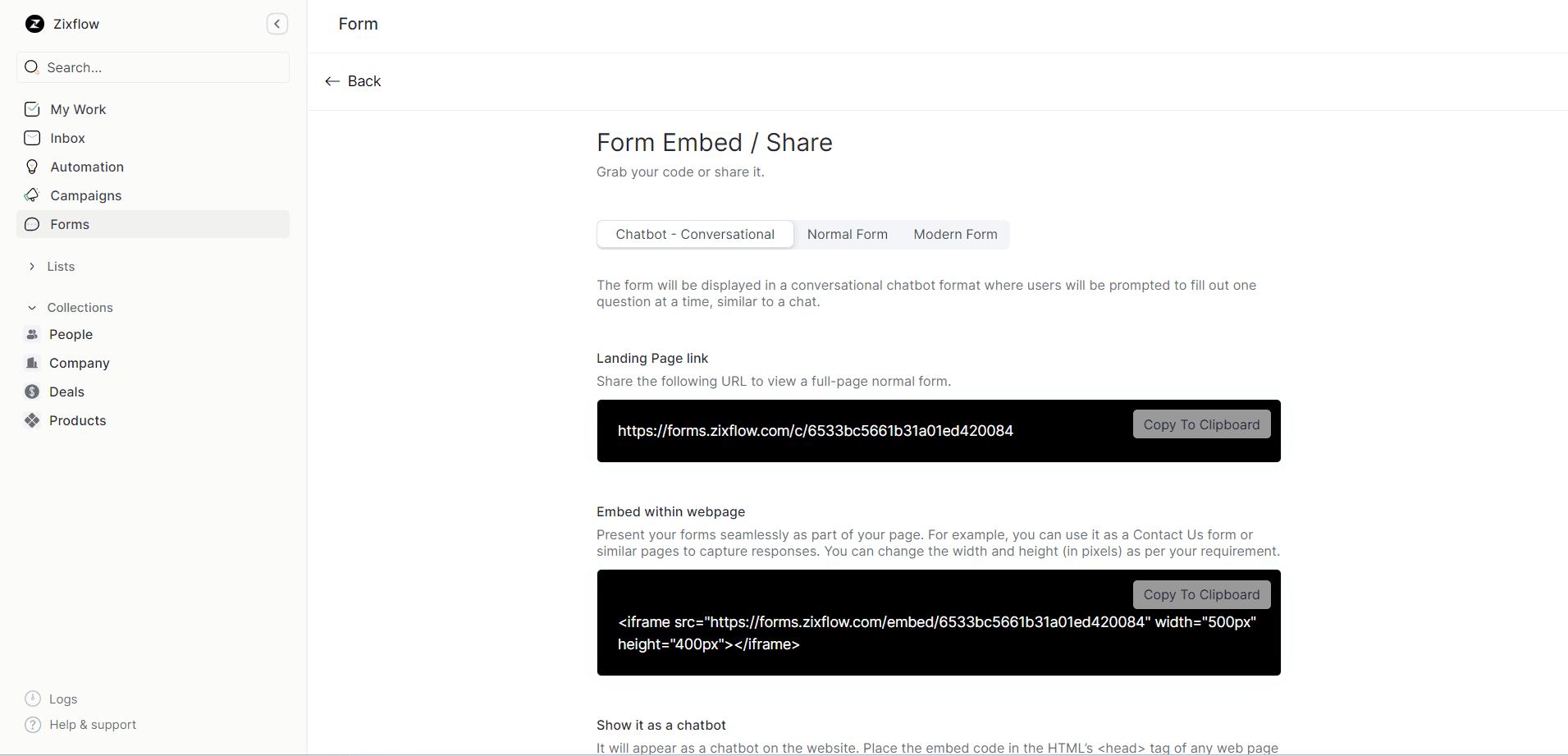
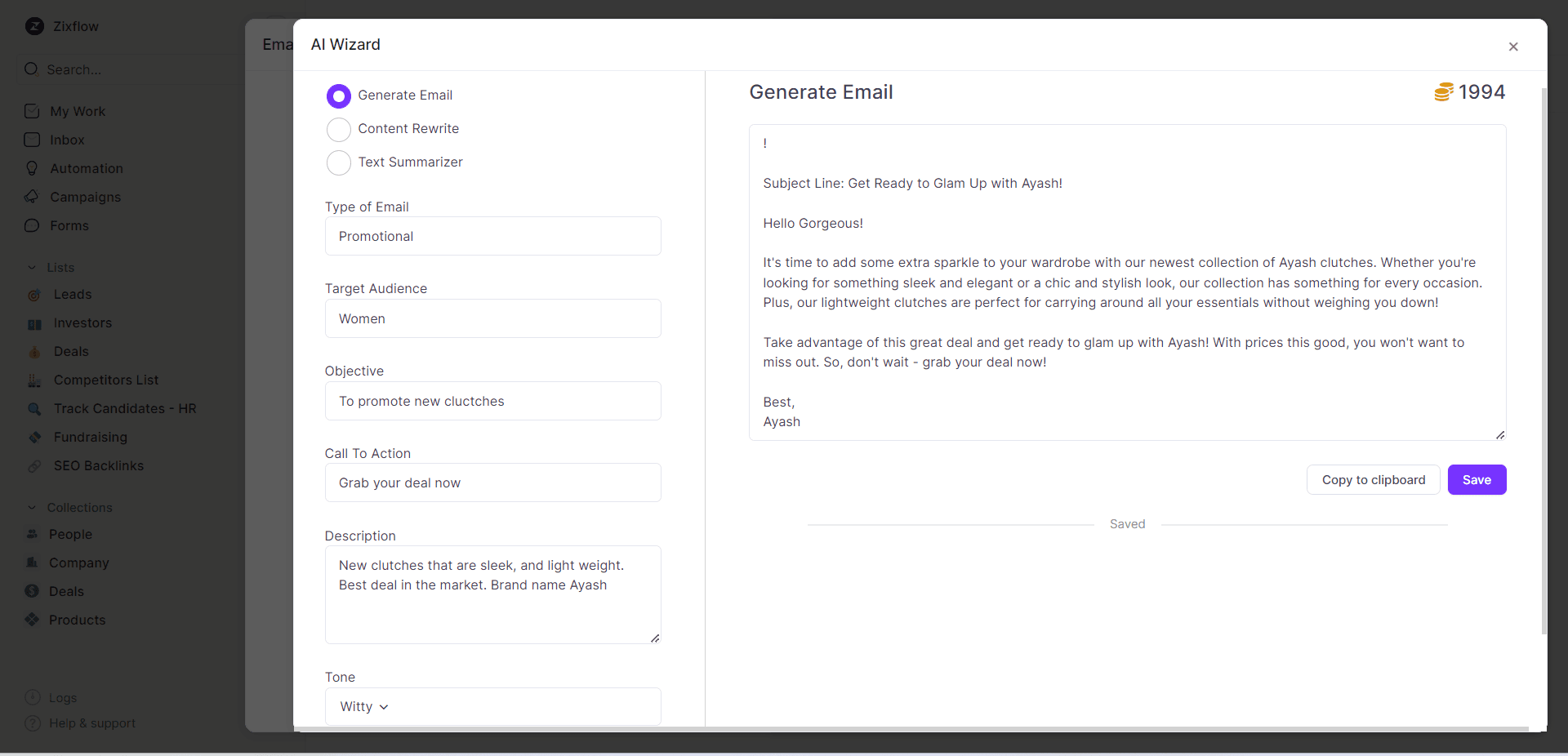
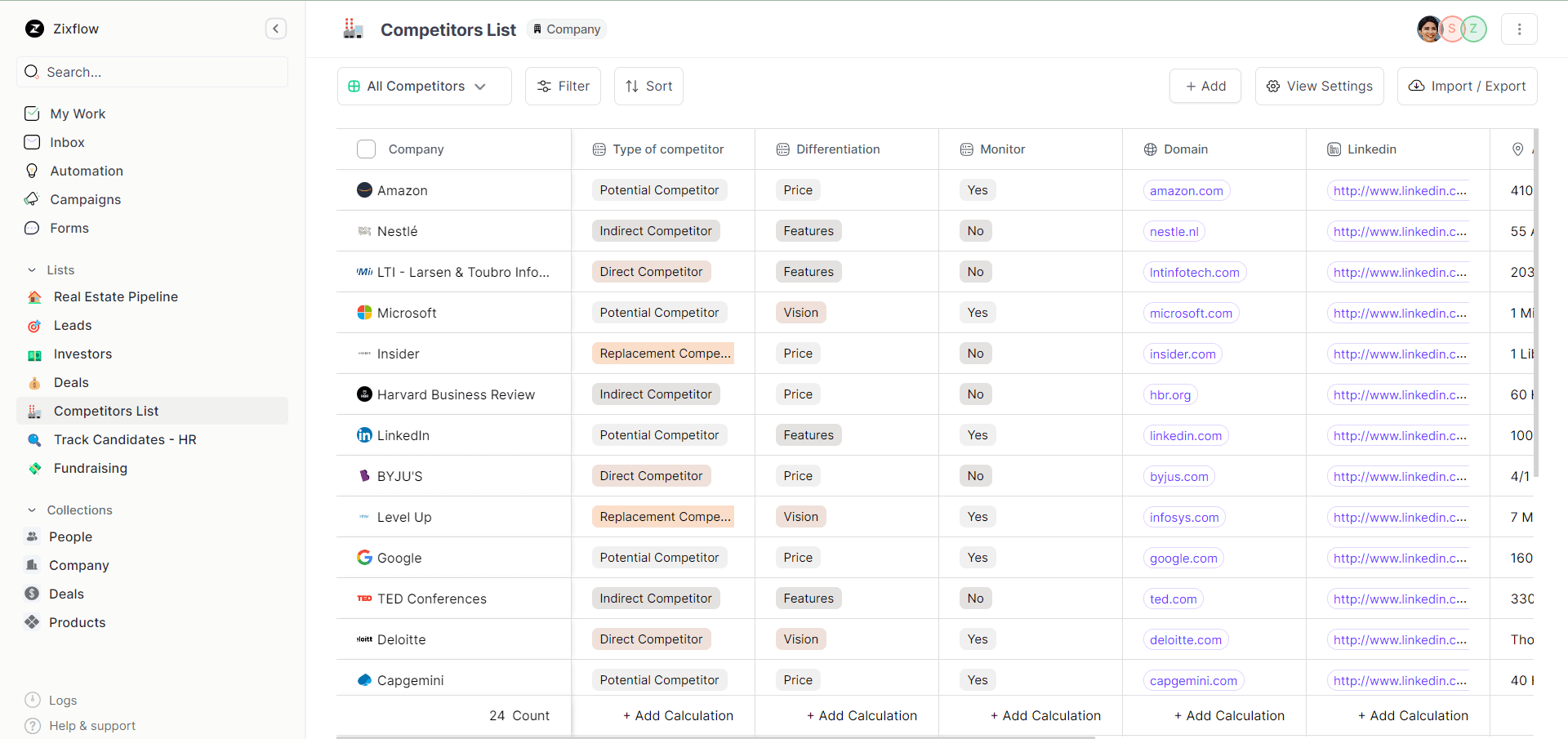
To keep your CRM usage effective, step into the process one by one as mentioned below and find if everything is on track:
Cross-check all recent CRM updates to stay up-to-date
Based on your business perspective, you may not be in a hurry to access all features of your integrated CRM right away. However, irrespective of purpose, you must stay up-to-date all the way even if it’s a small tweak.
Why is it? You never know when and how this small info will become your need of the hour for utilizing customer engagement to boost sales.
How to cross-check? Every other CRM maintains an industry-standard upgrade regularly, be it fixing technical glitches, or adjoining a new feature, to provide their partner an exclusive experience. Whether these CRMs are featured for particularly one organization, or it’s for all, they have always mentioned an updated timeline.
While in some cases it’s very easy to spot, in others you may need in-depth research. Well, you may subscribe to their newsletters, or keep your eye on their social media posts for recent announcements to get updates at your fingertips.
For instance, you can relate the situation with Boat, a leading electronic brand from India. Whenever Boat launches its new product, it simply posts updates on social media channels with engaging content to update its customers right away. So that Boat’s loyal customers don’t need to hover around. And the same goes for the CRM industry as well.
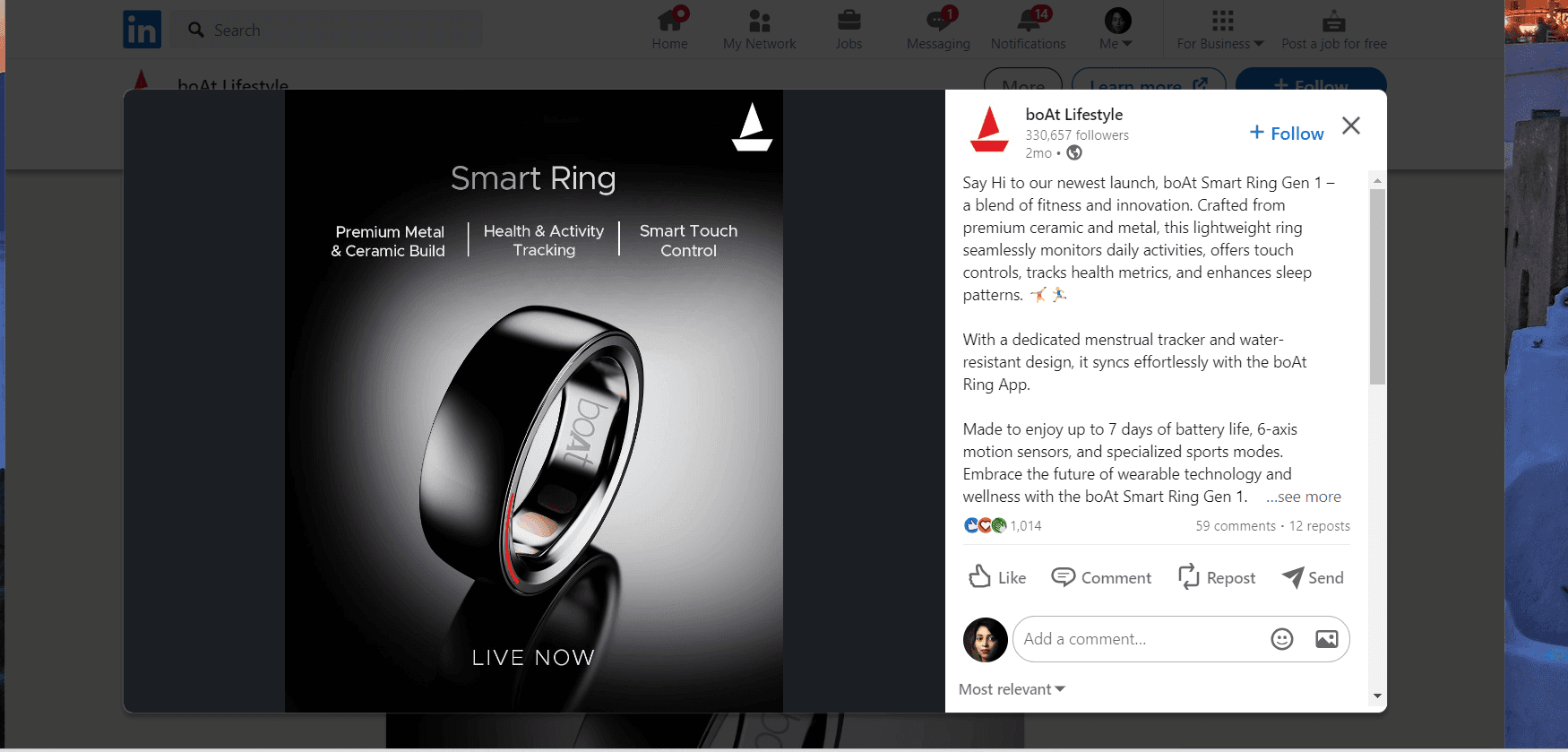
Ensure all integrations conveniently work
Can CRM work in isolation?
You are the user and you will know the answer that it simply is- Nah!
Now to move forward with your next step in CRM system audit, check whether all integrated tools are properly functioning or not. Well, you may have a wide range of tools depending on your business needs. Also, check and avoid SaaS auto renewal to monitor your current SaaS purchases and align them with your business goals.
I simply put down some of them for better understanding, look at below:
- Accounting & invoicing software such as QuickBooks, Xero, TallyPrime, etc.
- Project Management software like Trello, Jira, Asana, etc.
- Communication apps such as WhatsApp, Skype, SMS, etc.
- Meeting scheduling software like Calendar, Doodle, etc.
Why is it important? If you’re aiming to nail multi-channel sales engagement to outperform in the rat race, the focus should be on prioritizing your productivity, efficiency, collaboration, and your brand’s visibility.
Without running these aforementioned tools altogether, your work management system will scatter among different software and your workflow will face frequent interruptions. So, to make your CRM a collaborative system, individually go through all the software.
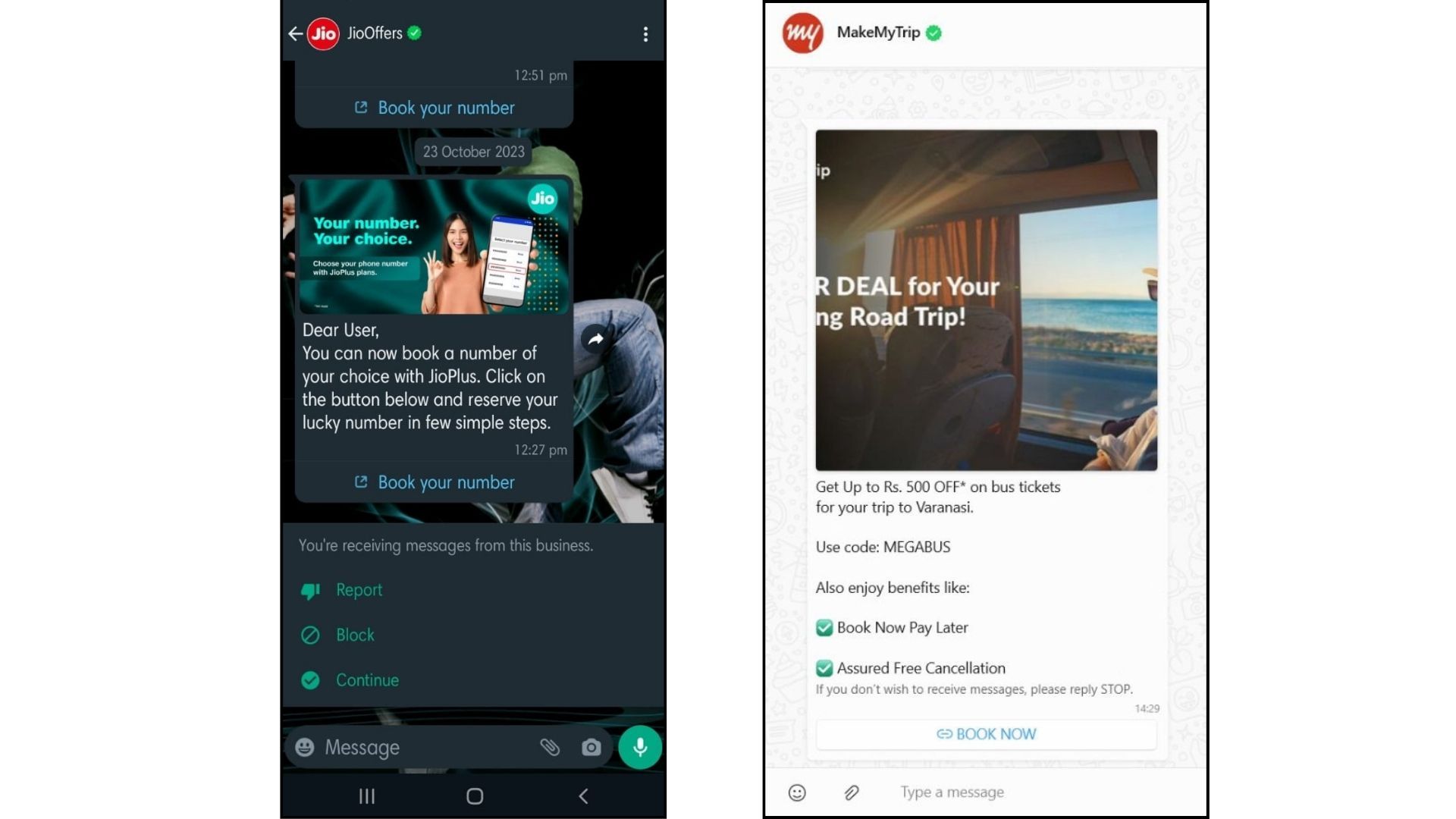
Now, let’s assume that your integrated CRM partner is Zixflow, an AI wizard software tool that you use to execute your WhatsApp campaign messages ideas. Now, if you check its detailed campaign analytics, it will show you the exact number of sent, delivered, read, error, or failed messages. And as the next step, you just find the answer to why.
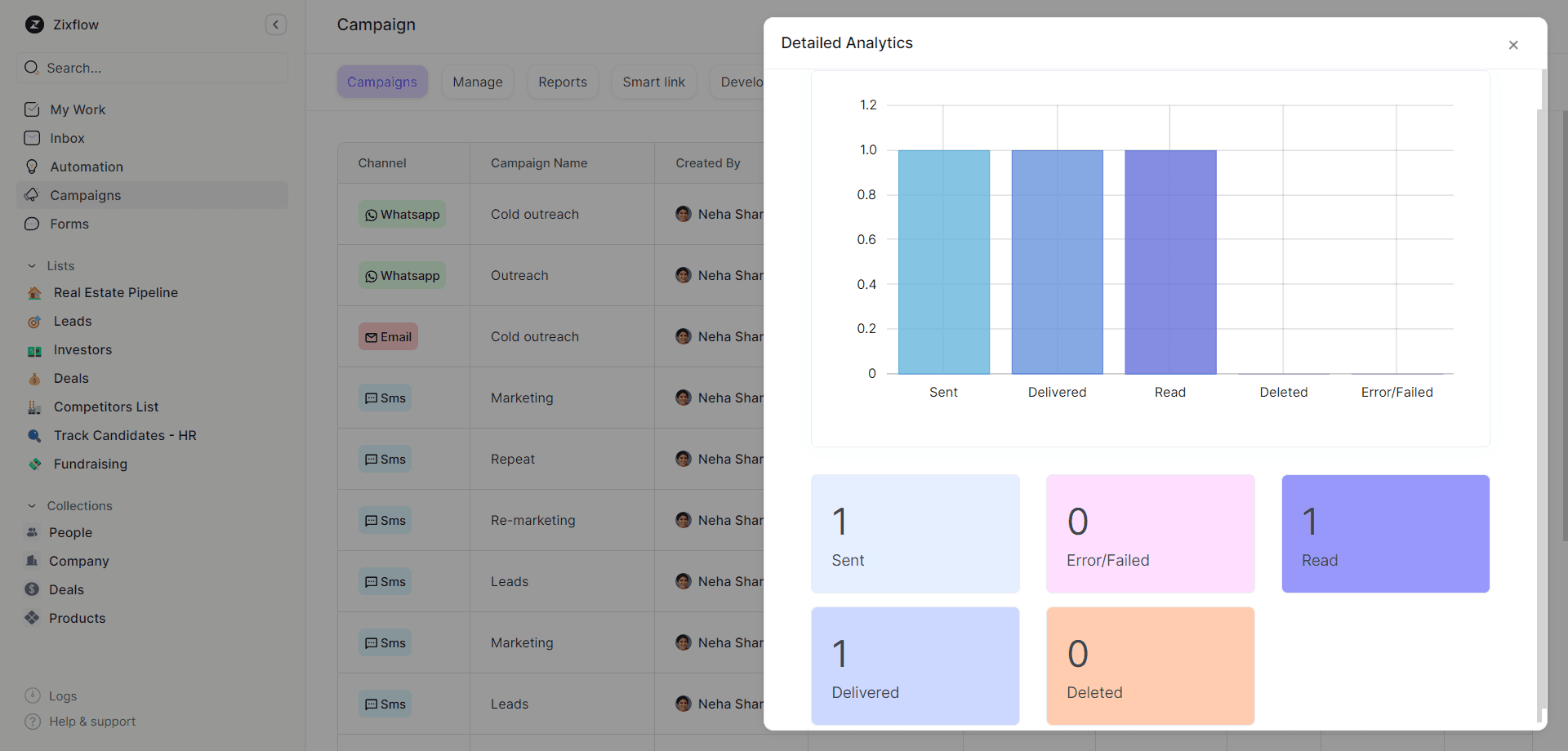
Analyze profitable conversions on CRM investment
“An investment is deemed an investment only through its Returns On Investment.” ― Lamine Pearlheart.
Is your integrated CRM capable enough to drive positive returns?
Umm, not sure! Let’s sort this out.
Why the ROI of CRM? The efficacy and profitable investment of CRM becomes crystal clear to you after gaining support for the reason behind your expectations with the real-time stat:
-
In 2011, a report by Nucleus Research stated that the average ROI of CRM was $5.60 for every dollar spent.
-
In 2014, another report by Nucleus Research found that sales revenue could be enhanced to $8.71 for every dollar invested.
-
Also recently in 2021, Dynamic Consultant Group reported that the ROI of CRM could be shot up to $30.48 for each dollar spent.
How to calculate? To calculate your Return On Investment (ROI) on CRM, you need a formula:
CRM ROI = (Gains from CRM investment - Cost of CRM investment) / Cost of CRM investment.
Now understand this with an example. Suppose, you spent a lump sum amount of $10,000 on a CRM in a financial year and gain a gross margin of $40,000, then your ultimate ROI percentage would be,
(40,000 - 10,000 / 10,000) x 100
=$3 x 100
=300%.
Well, the implication of the formula is not a straightforward task as it is mentioned above because CRM is just software. To make this formula actionable, you need to figure out the baseline, which is mentioned below:
-
Cost per lead that includes overall costs associated with generating leads such as salaries of your expert team members, cost of organic marketing and advertising campaigns, and more.
-
Revenue per lead that sheds light on the revenue generated by leads especially when your Marketing Qualified Leads (MQLs) pass criteria on the lead qualification checklist to turn into your Sales Qualified Leads (SQLs).
-
Overall revenue is the most important factor to compare your pre and post-CRM integration scenario.
If your concern is to close the leakage of wastage investment of money, you will surely invest your time in indexing improvement and analyzing returns.
Check for all outstanding assignments & automation
Hasn’t your CRM completed all due diligence?
Do your current CRM workflows create a huge risk for human errors?
Don’t know? Oops! Don’t tell me you didn’t even get bothered and try to find out the flaws!
Well, no worries! When you proceed with a CRM audit and review, you may find some outstanding tasks that are getting stuck in the pipeline and still yet to be completed. This clearly implies that your CRM automation is faced with any internal malfunctioning while utilizing its features to build well-crafted stages of a sales pipeline or manage other tasks.
For instance, you’re using Zixflow CRM to build and automate your sales cadence as well as automate your workflow management. In sales cadence, you can schedule preferable timings, and utilize break ups to update your cadence. And in your workflow automation, you can set triggers, apply conditions, and make them actionable. Now, in a CRM audit, you need to check whether all these work as they should or not.
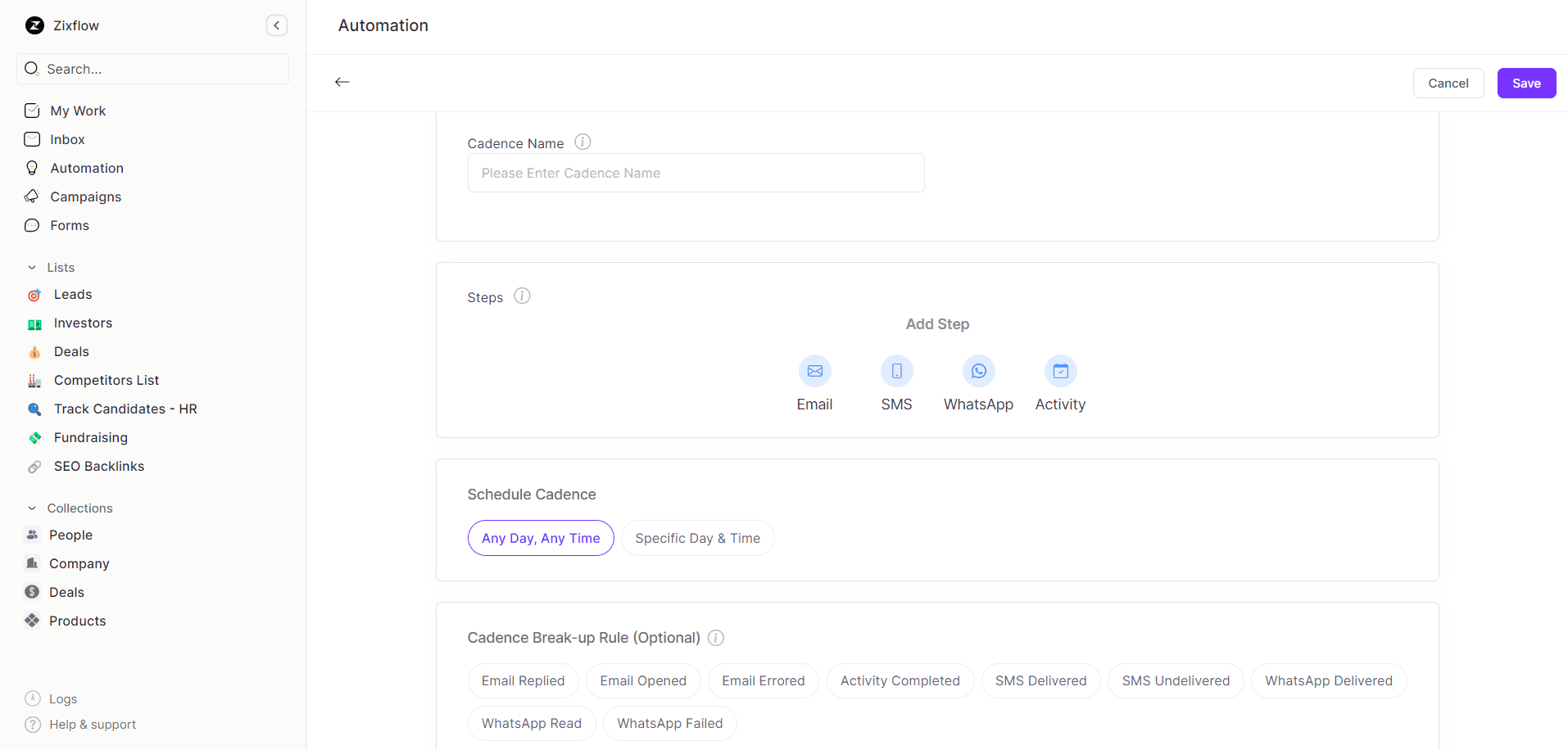
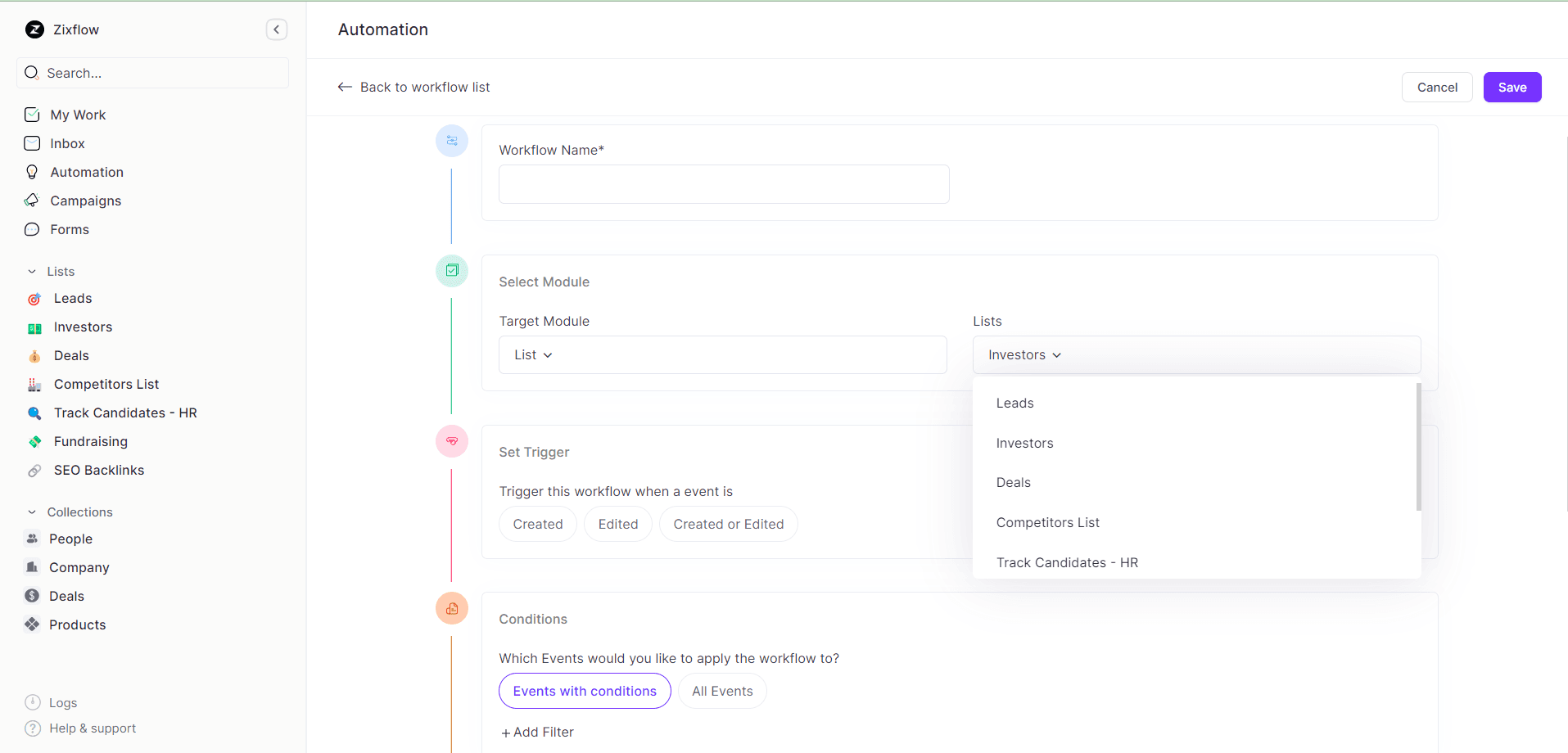
Why is this audit important? Your CRM should maintain automation that must optimize the experience with both users and customers. Probably you can get some conversions from those outstanding deals after managing their flows as well as enhancing efficiency and accuracy.
To make this audit fruitful, you can do some simple tasks as mentioned below:
- Follow up and figure out the reason behind incomplete assignments.
- Double-check all the tasks to know whether they are well-balanced under your team’s proactive vigilance with a due date.
Ask for feedback from your internal team
Would you like to ask about CRM performance from your internal expert users? Hah! Good decision.
Why? Well, to take a different perspective, you should talk to your marketing and sales reps if they’re finding any intricacies in ongoing flows. Having an open discussion about your teams’ experience will help you to understand whether the existing CRM is feasible for your business goals.
Now, to relate the scenario, imagine you love cooking but are fascinated by experimenting a lot. Although your dishes are mouthwatering, your focus is on making the best. And to accomplish your goals, every time you gather feedback from those who have tasted it. No matter if they are praising you or encouraging you to do better, their valuable feedback will turn your expertise into tastebuds.
Now, in a CRM audit, how should you gather feedback?
Interviewing
Ask your people a range of questions while taking keynotes on the pros and cons of different takes. Well, here are some suggestions for you that you can pick from:
- How user-friendly or beneficial do you find the CRM?
- What features are you missing? What’s more, are you needed in CRM to improve your excellence?
- What problems are creating hurdles in your way?
- Does the CRM fulfill the needs of optimizing the sales engagement queue?
Shadowing
Watch after your employees who are closely working with the CRM and evaluate how the integrated AI-powered CRM supports or hinders their workflow. Well, remember, the shadowing process does not apply to all, rather it’s essential to those who are taking care of a higher number of touchpoints.
Surveying
Going one after another employee can be a hectic procedure, this is why a shortcut time-saving approach is surveying. With the multi-purpose surveys, you can conduct polls, collect reviews, and tally between a larger number of data sets in a single swipe.
To relate this approach take an example from Zomato [a leading online food delivery brand in India]. You can see the below-mentioned Zomato’s survey form on “Market research on predicting user engagement of mobile”. Here the purpose is to gather info on people’s choice, preferences, and also their issues, all related to telecommunication networks. Well, you can do the same in a dedicated survey for CRM audits.
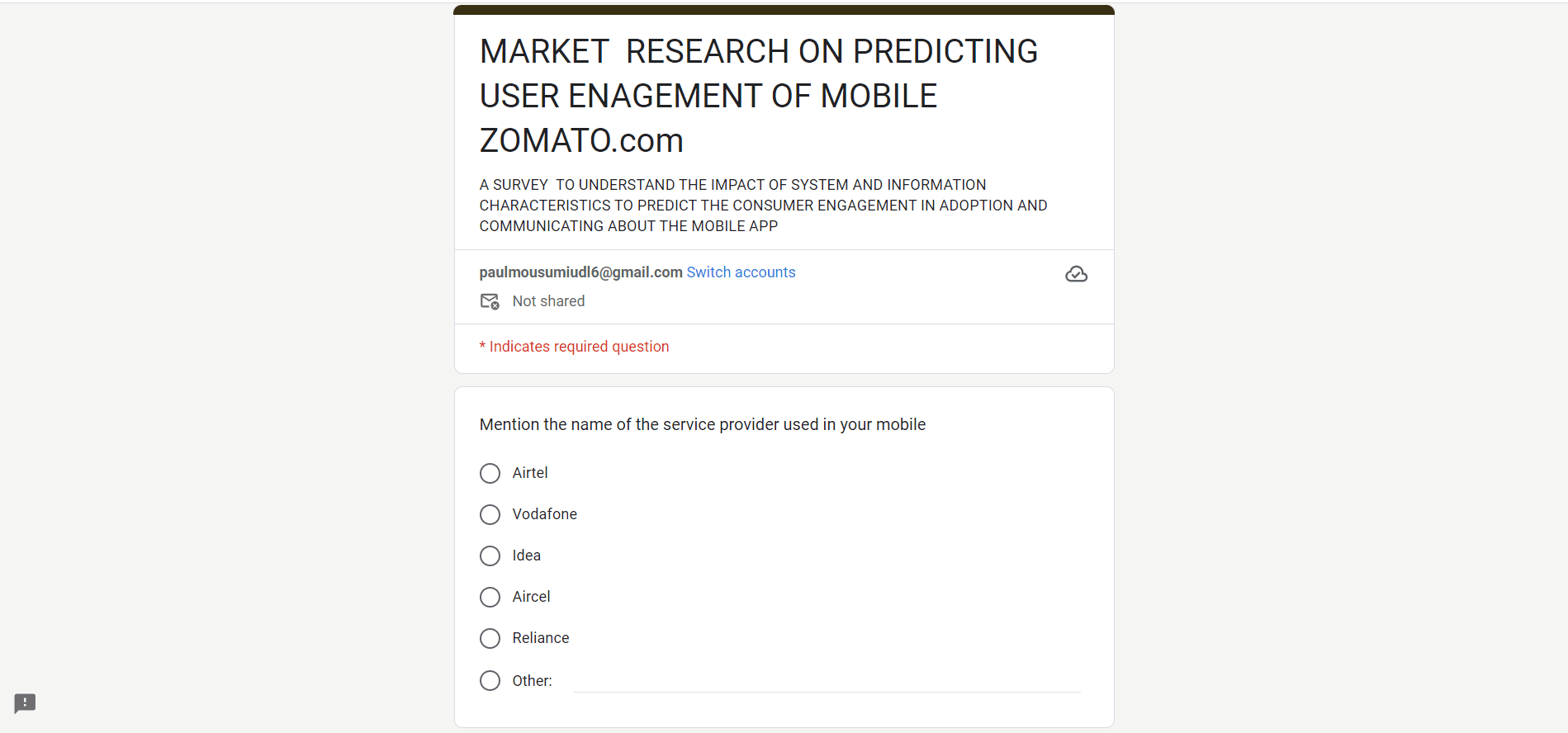
Step 3: Reviewing CRM data quality
“Stop the focus on embarrassing focus on quantity. Start obsessing about quality.” ― Michael Leander.
Do you agree with this aforementioned statement by a great sales influencer? Probably yep!
Because quality data is not less than a holy grail for your business goals which you should aim for. In your CRM, there are four types of data stored after an effective data mining process:
Identical data: Basic information about your customers such as name, email address, physical address, company name, phone number, and social media address.
Descriptive data: Information that includes your customers’ lifestyle and general interests such as educational level, marital status, specific hobbies, social connections, and so on.
Qualitative data: Information that especially covers your customers' behavior, opinions, preferences, and satisfaction level.
Quantitative data: It covers all marketing and sales metrics of B2B and B2C that showcase the current industry trends such as Customer Lifetime Value (CLV), Net Promoter Score (NPS), Customer Acquisition Cost (CAC), Revenue Per Lead (RPL), and so on.
To take care of quality in this aforementioned database, consider the following steps in your CRM audit:
Discard redundant data from the system
You need to start removing unnecessary or untouched data from your CRM that are stored for a longer time and you may be juggling between them.
Why so? Redundant data can blend with your important notes and unnecessarily create an illusion for you which will undermine your efficiency. Moreover, your bucket of collected data may be no longer worthy to look upon. Either way, unused data that is cluttered in your CRM should be cleaned up right away.
To relate, let's take an example. Imagine Jio, a leading Indian telecommunication company is approaching its wide customers with alluring exclusive deals through WhatsApp marketing messages and of course, automate the process with CRM.
But mistakenly its marketing reps send these messages to its existing clients who probably are not the target audience for these texts. Simply the process will create hype on expectation & outcome will jeopardize the marketing goals. The reason why redundant data should be removed from your CRM.
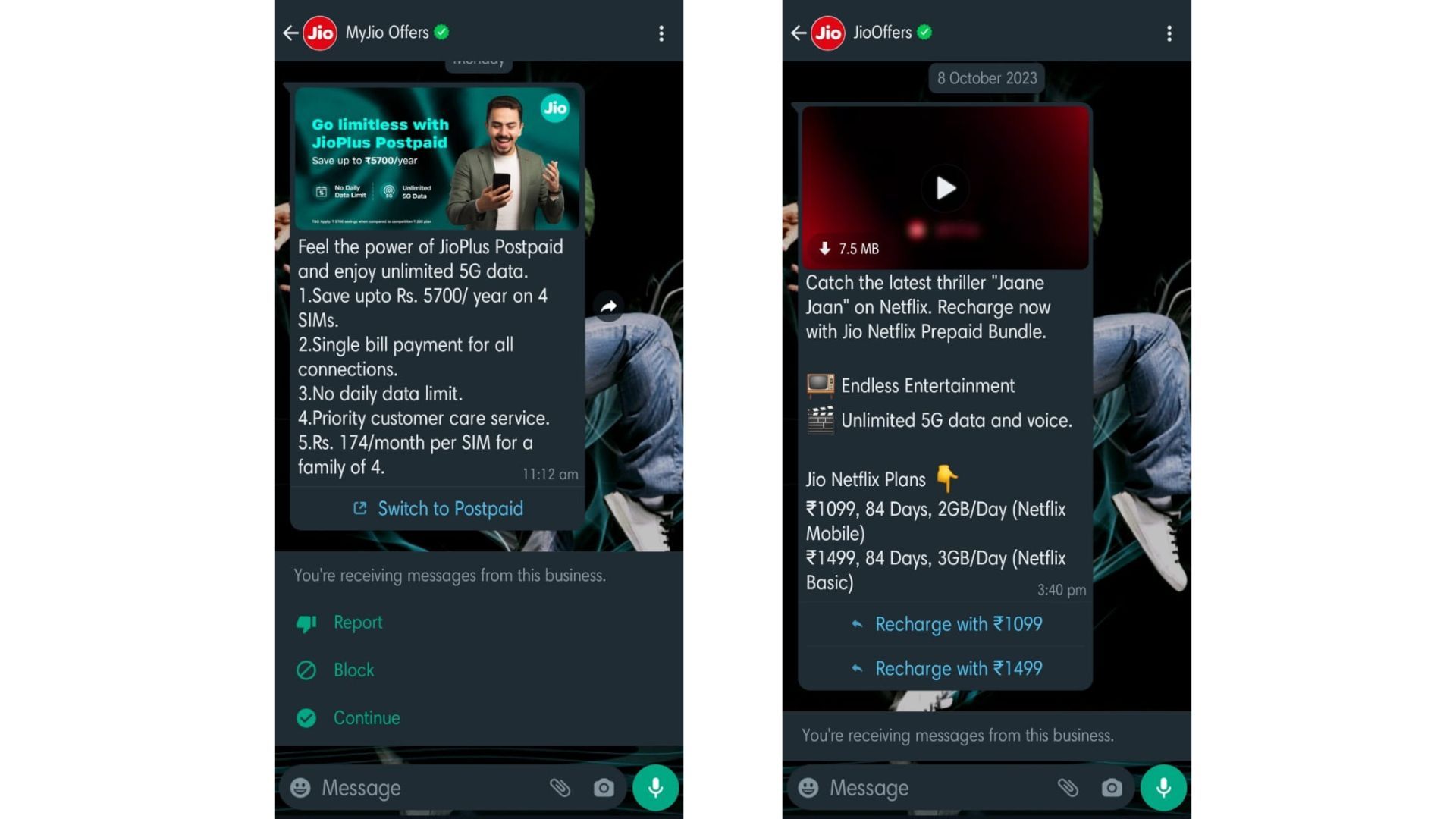
Examine data segmentation
Do you know that a business can experience a 130% surge in understanding customers' intent after segmentation?
But to get a flawless result, you need to examine different kinds of segmentation in CRM audit procedures that are most likely the same as mentioned below:
- Demographic segmentation.
- Geographic segmentation.
- Behavioral segmentation.
- Need-based segmentation.
- Value-based segmentation.
- Psychographic segmentation.
- Technographic segmentation.
Why so? The key takeaways of segmenting your customers’ data are:
-
Gaining the ability to create responses tailored to business-specific needs that suit your target market to build an impression on your sales prospects.
-
Identifying secret potential opportunities and challenges for the present and predicting future business trends.
-
Enabling mass-personalized interactions and mass-marketing campaigns to drive growth in sales and revenue.
Well, during the CRM customer segmentation review process, consider some quality questions and be loyal to yourself to give a bold answer:
- Are you convinced of the outcome of data segmentation?
- Do you need any further segmentation to fine-tune your customer segmentation?
- Are you missing out on anything to take advantage of segmentation?
A sure-shot detailed answer to each will give you a comprehensive view of whether it’s an exhaustive utilization of CRM data altogether.
Double-check for data accuracy & data updation
"Better be despised for too anxious apprehensions than ruined by too confident security.” ― Edmund Burke.
Imagine you have planned a well-crafted email campaign to create sales engagement with various kinds of emails. But what if 50% of collected email addresses are either duplicates, misplaced or it's simply inaccurate?
Will it not create dreadlocks in the flow? Of course! It will do.
A CRM mostly collects data across several channels as a web form that doesn’t maintain data quality control parameters which bind you to experience misorganized and bloated data.
Now, think once, in the sea of data with multiple segmentation, how do you ensure that your customers have only one single WhatsApp number, email ID, or phone number? Or your CRM holds updated information with a single entry.
This is where a sharp-eyed CRM audit takes place. Why? Because data is the wealth of your business but not the incomplete or inaccurate one. Smart data cleansing and data updation enable you to pace up with flawless business strategies.
Moreover, with CRM audit, you can simply suppress the following negative consequences:
- A higher percentage of bloated data.
- Compromised decision-making.
- Diving in waste resources.
- Poor customer experience.
Consistently evaluate CRM performance to get the utmost profits out of it
To beat the time in the evolving trends of a competitive business environment, if your business needs a modern and highly tech-savvy stack like CRM, then equally inspecting its health is no less than imperative.
But before that to keep you safe from putting your shoulder to the wheel, choosing one of the best CRMs available in the market is very crucial. Well, you can pick and choose Zixflow among them.
No matter, if you’re managing sales engagement best practices, excelling in effortless marketing campaigns, smoothly capturing leads, and nurturing relationships with them, or your concern is to get a flawless output - Zixflow’s ultimate stack manages these all within a snap only for you.
So, do your CRM audit later but first grab your brighter opportunities now with a free demo of Zixflow!
